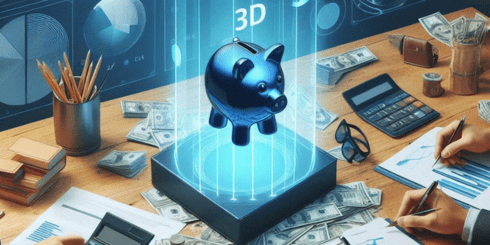IPO vs. Secondary Market: Where Should You Invest?
IPO Basics
Initial Public Offering, or IPO, is the process through which a private company offers shares to the public for the first time. This allows the company to raise capital by selling a portion of ownership to investors. IPOs provide an opportunity for investors to become shareholders in the company and potentially profit from its growth and success in the future.
Understanding the Secondary Market
The secondary market is where investors trade previously issued securities without the involvement of the issuing companies. It provides investors with the opportunity to buy and sell stocks, bonds, and other financial instruments after their initial issuance. Unlike the primary market where new securities are issued, the secondary market enables investors to trade existing securities among themselves at market-determined prices.
In the secondary market, the prices of securities are determined by supply and demand forces, reflecting investors’ perceptions of the value of the assets. This market is highly liquid, allowing investors to sell their securities quickly if needed. The secondary market contributes to price discovery, as the continuous trading activity provides real-time information about the value of securities. Additionally, it offers investors the flexibility to enter and exit positions as they see fit, providing a level of autonomy in managing their investment portfolios.
IPO The secondary market allows investors to trade existing securities among themselves, providing liquidity and flexibility. Prices are determined by supply and demand, aiding in price discovery. Investors can quickly buy or sell securities, managing their investment portfolios autonomously.
Advantages of Investing in IPOs
Investing in IPOs offers investors the opportunity to get in on the ground floor of a new company, potentially reaping significant rewards as the company grows and expands. By purchasing shares at the initial offering price, investors may benefit from the potential for rapid price appreciation as the company gains traction and attracts more investors.
Additionally, investing in IPOs can provide access to innovative and disruptive companies that have the potential to shake up industries and deliver above-average returns. These companies often represent new technologies or business models that have the potential to disrupt traditional markets, offering investors the chance to capitalize on the next big trend in the market.
Advantages of Investing in the Secondary Market
The secondary market offers investors the opportunity to buy and sell shares of existing stocks rather than purchasing shares directly from the company. This means that investors can easily enter or exit a position, providing liquidity and flexibility in managing their investment portfolio. In addition, the secondary market allows investors to access a wide range of securities traded on stock exchanges, offering a diverse selection of investment options to suit individual risk tolerance and investment goals.
Risks Associated with IPOs
Investing in IPOs can be lucrative, but it also comes with its fair share of risks. One common risk associated with IPOs is the potential for high volatility in the stock price. Since newly public companies lack a trading history, their stock prices can fluctuate significantly in the early stages.
Another risk is the possibility of underperformance. Not all IPOs soar in price post-launch; some may struggle to meet investor expectations and result in losses. Investors should be cautious and conduct thorough research before diving into the IPO market to mitigate these risks.
Current IPO Investing in IPOs can be lucrative, but it also comes with its fair share of risks. One common risk associated with IPOs is the potential for high volatility in the stock price. Since newly public companies lack a trading history, their stock prices can fluctuate significantly in the early stages. Another risk is the possibility of underperformance. Not all IPOs soar in price post-launch; some may struggle to meet investor expectations and result in losses. Investors should be cautious and conduct thorough research before diving into the IPO market to mitigate these risks.
Risks Associated with the Secondary Market
Investing in the secondary market can expose investors to various risks that should be carefully considered. One significant risk is market volatility, where the prices of securities can fluctuate rapidly due to various factors such as economic conditions, geopolitical events, or corporate earnings reports. This volatility can lead to sudden and significant losses for investors who may not have the ability to react quickly enough to market movements.
Another risk associated with the secondary market is liquidity risk, which refers to the ease with which an investor can buy or sell a security without causing a substantial change in its price. Securities with low liquidity may be difficult to sell quickly, especially during times of market stress, leading to potential losses or missed investment opportunities. It is essential for investors to assess the liquidity of the securities they are considering to ensure they can effectively manage their portfolios in the secondary market.
Factors to Consider Before Investing in an IPO
Before diving into an initial public offering (IPO), investors should carefully analyze the company’s business model, industry dynamics, and financial health. Understanding the company’s competitive advantage, growth prospects, and potential risks is crucial in making an informed investment decision. Conducting thorough research and due diligence can help investors assess whether the IPO aligns with their investment goals and risk tolerance.
Another important consideration before investing in an IPO is to evaluate the valuation of the company. Assessing the IPO price relative to the company’s earnings, growth potential, and industry benchmarks can provide insights into whether the stock is fairly priced or potentially overvalued. Additionally, examining the use of proceeds from the IPO and the company’s future growth strategies can shed light on the long-term sustainability and value creation prospects of the investment. By carefully evaluating these factors, investors can make more informed decisions when considering participating in an IPO.
Factors to Consider Before Investing in the Secondary Market
When considering investing in the secondary market, one important factor to evaluate is the company’s historical performance. Analyzing key financial indicators such as revenue growth, profit margins, and debt levels can provide valuable insights into the company’s stability and potential for future growth. Additionally, researching the company’s competitive position within its industry and market trends can help investors make informed decisions about the company’s long-term prospects.
Another factor to consider before investing in the secondary market is the overall economic and market conditions. It’s crucial to assess factors such as interest rates, inflation, geopolitical events, and regulatory changes that could impact the performance of the stock market. By staying informed about macroeconomic trends and understanding how they might influence specific industries or sectors, investors can better navigate the complexities of the secondary market and make sound investment choices.
IPO Dashboard is a valuable resource for investors looking to navigate the secondary market. Evaluating a company’s historical performance and understanding market conditions are crucial factors to consider before making investment decisions. Analyzing financial indicators and staying informed about macroeconomic trends can help investors make sound choices.
Long-Term vs. Short-Term Investment Strategies
Investors often face the decision of whether to adopt a long-term or short-term investment strategy when navigating the financial markets. A long-term approach typically involves holding investments for an extended period, aiming to benefit from potential growth and ride out market fluctuations. This strategy requires patience and a deep understanding of the fundamentals of the investments in question, focusing on their potential to appreciate over time.
Conversely, a short-term investment strategy involves buying and selling assets within a shorter time frame, often driven by market trends, price fluctuations, or short-term opportunities for profit. This approach may require more active monitoring of the market and a willingness to react quickly to changes in value. While short-term strategies can offer the potential for quick gains, they also come with increased risk and uncertainty compared to a long-term investment approach.
Demat app offers investors the choice between long-term and short-term investment strategies. Long-term approach focuses on potential growth over time, while short-term strategy involves quick gains with increased risk and market monitoring. Choose wisely based on your financial goals and risk tolerance.
Diversification in IPOs and the Secondary Market
Investors often seek diversification in their portfolios to spread risk across different assets. When it comes to IPOs, diversification can be achieved by investing in a variety of newly offered stocks across different industries and sectors. By spreading investments in IPOs, investors can mitigate the risk associated with any single stock performing poorly post-offering.
Similarly, in the secondary market, diversification plays a crucial role in managing risk. By investing in a mix of securities such as stocks, bonds, and commodities, investors can reduce the impact of any particular asset underperforming. Diversifying in the secondary market allows investors to benefit from various market conditions and potentially enhance overall portfolio returns.


